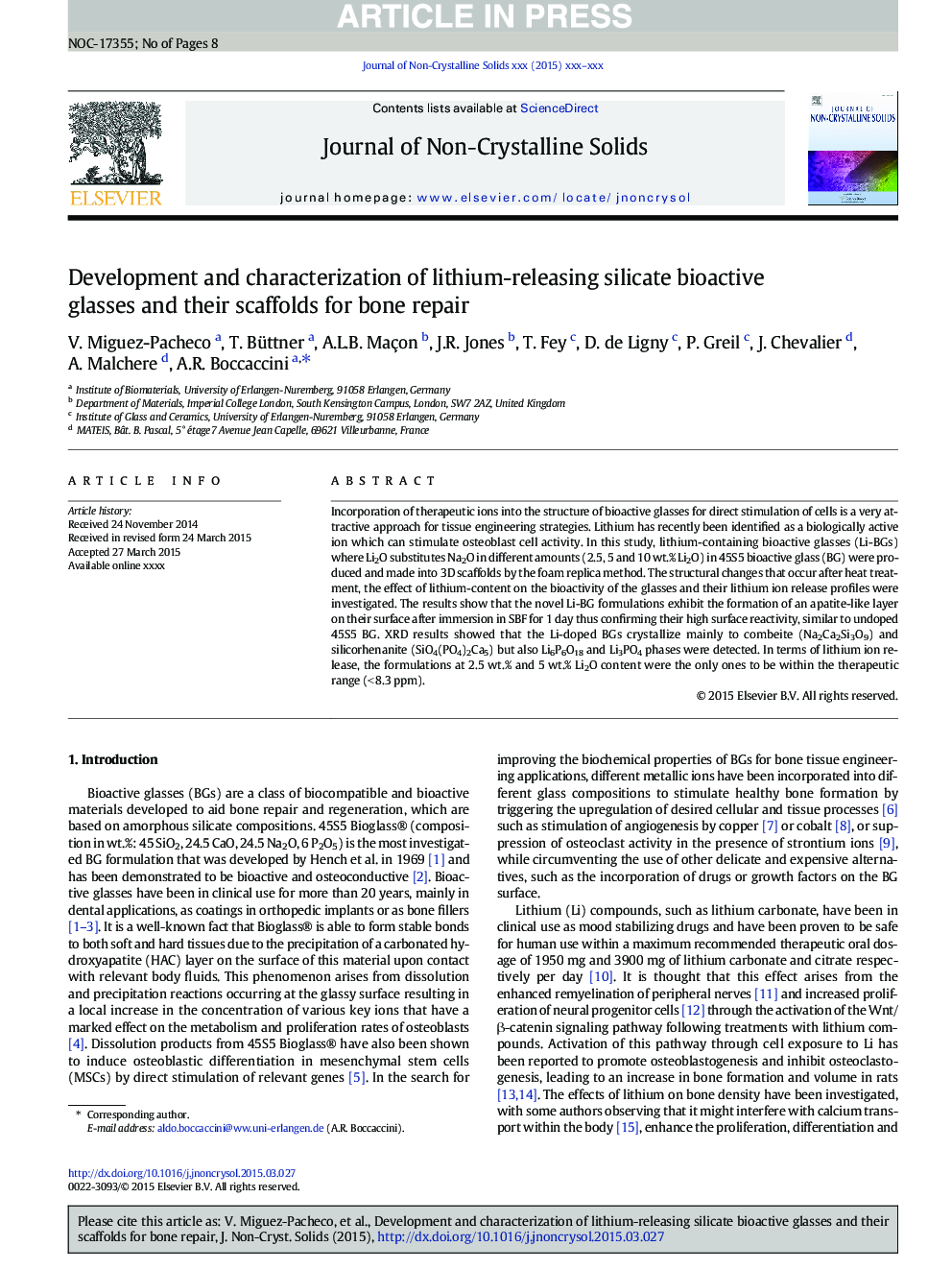| Article ID | Journal | Published Year | Pages | File Type |
|---|---|---|---|---|
| 10630944 | Journal of Non-Crystalline Solids | 2016 | 8 Pages |
Abstract
Incorporation of therapeutic ions into the structure of bioactive glasses for direct stimulation of cells is a very attractive approach for tissue engineering strategies. Lithium has recently been identified as a biologically active ion which can stimulate osteoblast cell activity. In this study, lithium-containing bioactive glasses (Li-BGs) where Li2O substitutes Na2O in different amounts (2.5, 5 and 10Â wt.% Li2O) in 45S5 bioactive glass (BG) were produced and made into 3D scaffolds by the foam replica method. The structural changes that occur after heat treatment, the effect of lithium-content on the bioactivity of the glasses and their lithium ion release profiles were investigated. The results show that the novel Li-BG formulations exhibit the formation of an apatite-like layer on their surface after immersion in SBF for 1Â day thus confirming their high surface reactivity, similar to undoped 45S5 BG. XRD results showed that the Li-doped BGs crystallize mainly to combeite (Na2Ca2Si3O9) and silicorhenanite (SiO4(PO4)2Ca5) but also Li6P6O18 and Li3PO4 phases were detected. In terms of lithium ion release, the formulations at 2.5Â wt.% and 5Â wt.% Li2O content were the only ones to be within the therapeutic range (<Â 8.3Â ppm).
Related Topics
Physical Sciences and Engineering
Materials Science
Ceramics and Composites
Authors
V. Miguez-Pacheco, T. Büttner, A.L.B. Maçon, J.R. Jones, T. Fey, D. de Ligny, P. Greil, J. Chevalier, A. Malchere, A.R. Boccaccini,
